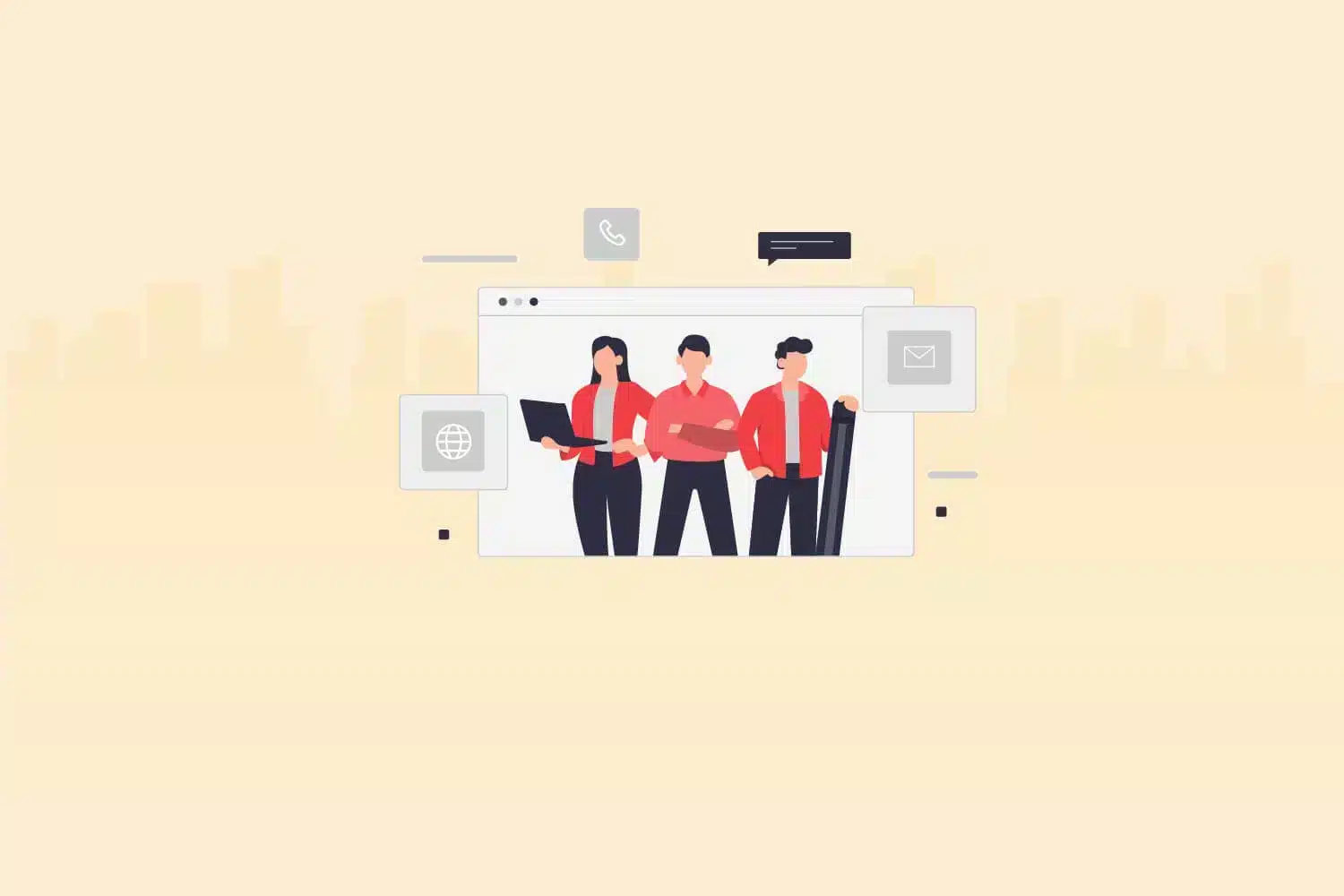In the ever-evolving landscape of start-ups, one essential factor often determines the line between success and stagnation: workforce planning. For these burgeoning enterprises, a well-executed workforce planning strategy can make all the difference in achieving sustainable growth and scaling effectively. Workforce planning involves much more than simply hiring employees to fill vacant positions; it’s a strategic approach that aligns your human resources with your business goals.
Startups that implement workforce planning practices experience a 30% reduction in early-stage employee turnover, contributing to long-term sustainability, as found in a study by CB Insights.
Effective workforce planning empowers start-ups to navigate challenges, seize opportunities, and cultivate a competitive edge. By thoughtfully assessing the current and future needs of your business, crafting a comprehensive strategy for recruitment, development, and retention, and adapting to changes with agility, you can lay the foundation for sustainable growth. In the following sections, we will unravel the intricacies of workforce planning, from assessing skill gaps to embracing flexibility, and everything in between.
In this guide, we will delve into the world of workforce planning, exploring its significance and benefits for start-ups, as well as providing actionable insights for crafting a successful workforce planning strategy.
The basics of workforce planning
In the realm of start-ups, where every decision holds the potential to shape the course of a company’s trajectory, workforce planning emerges as a critical strategic element. This facet of business management goes beyond the conventional hiring process, delving into the intricate interplay between human resources and organizational objectives. Workforce planning entails the meticulous alignment of personnel with the dynamic demands of a burgeoning enterprise.
At its core, workforce planning involves a proactive approach to human resource management that aims to ensure the right people are in the right roles at the right time. It transcends the reactive process of filling immediate vacancies and embraces a comprehensive perspective that takes into account both present and future needs. By doing so, start-ups can not only address the current challenges they face but also set the stage for sustained growth.
In essence, workforce planning is the bridge between the aspirations of a start-up and the means required to achieve them. It requires a deep understanding of the company’s goals, an assessment of the skills and talents necessary to realize those goals, and a systematic strategy to acquire, develop, and retain the required workforce. In a landscape characterized by uncertainty and rapid change, effective workforce planning acts as a rudder, guiding the ship of a start-up toward stability and success.
In the following sections, we will explore the multifaceted components of workforce planning, from identifying skill gaps to crafting a hiring strategy that aligns with business objectives. As we navigate through the intricacies of this crucial process, a clearer picture will emerge of how workforce planning is not just a buzzword, but a cornerstone of sustainable growth in the competitive world of start-ups.
Assessing current and future needs
In the intricate dance of start-up evolution, the art of workforce planning takes center stage. To orchestrate this harmonious ensemble, start-ups must first gain a profound understanding of their current and future needs. This involves a strategic analysis of both short-term objectives and long-term visions, intertwining them seamlessly with the talents and capabilities required to achieve them.
Identifying immediate business goals lays the groundwork for effective workforce planning. Start-ups must dissect their aspirations, breaking them down into achievable milestones that act as compass points for growth. By understanding these objectives, companies can discern the types of skills, expertise, and roles that will drive progress. It’s a process of envisioning the finish line and reverse-engineering the steps needed to get there.
However, the scope of workforce planning stretches beyond the horizon of immediate objectives. Start-ups must also consider their long-term trajectory, anticipating the shifts and demands that the future will bring. This prescience enables the cultivation of a versatile workforce capable of adapting to evolving market landscapes. Proactively addressing potential skill gaps and emerging needs equips start-ups with resilience, positioning them to seize opportunities as they arise.
In this intricate process of assessment, the interplay between the present and the future guides decision-making. It’s a balancing act that involves threading the needle between the current workforce’s abilities and the skills required to propel the start-up into its desired future state. As we delve deeper, the subsequent sections will illuminate how start-ups can effectively translate this evaluation into actionable strategies for recruitment, development, and retention, ultimately fostering a thriving ecosystem of talent that propels the business forward.
Creating a workforce planning strategy

In the dynamic landscape of start-ups, where agility and innovation are paramount, crafting a robust workforce planning strategy becomes a cornerstone for success. This strategic blueprint acts as a guiding compass, aligning human capital with the company’s overarching goals and vision. Unlike a static document, a well-formed workforce planning strategy is a living entity that adapts to changing circumstances while remaining rooted in the pursuit of organizational excellence.
At the heart of this strategy lies the integration of recruitment, development, and retention efforts. To create an effective plan, start-ups must first define clear objectives that span both short-term necessities and long-term aspirations. This clarity serves as the foundation upon which the entire strategy is built.
Leveraging data and analytics stands as an essential pillar in this endeavor. Start-ups must tap into the wealth of available information to make informed decisions about the skills and talents required. This data-driven approach helps companies avoid unnecessary guesswork and hunches, leading to a workforce that is not just aligned but optimized for success.
A successful workforce planning strategy is not a one-size-fits-all solution. It must be tailored to the unique dynamics of the start-up, accounting for factors such as industry trends, competitive landscape, and the company’s growth trajectory. This customization empowers start-ups to adapt quickly to changes, seize emerging opportunities, and pivot when necessary.
As we delve further, subsequent sections will delve into the nitty-gritty of recruitment strategies that attract top talent, the intricacies of employee development programs that nurture skills, and the art of retention practices that create a culture of commitment. By weaving these elements together, start-ups can create a holistic workforce planning strategy that not only propels them toward their goals but also positions them as agile and resilient contenders in the ever-evolving business arena.
Recruitment and onboarding
In the mosaic of workforce planning for start-ups, recruitment and onboarding form the crucial initial strokes that lay the foundation for a successful workforce. Attracting the right talent and seamlessly integrating them into the organization’s fabric are pivotal steps that demand careful attention and strategic execution.
Crafting compelling job descriptions and employer branding initiatives are pivotal in attracting top-tier talent. Start-ups must articulate their mission, values, and unique selling points to stand out in a competitive market. Job descriptions, more than mere task lists, should portray the role’s significance in the company’s journey, attracting candidates who resonate with the vision.
Once the recruiting phase is complete, the transition to onboarding is equally vital. A streamlined onboarding process is more than a cursory introduction; it’s an immersive experience that nurtures a sense of belonging and understanding. Start-ups should provide new hires with the tools, information, and networks necessary to hit the ground running and contribute meaningfully from day one.
Effective onboarding transcends paperwork; it’s about cultivating a sense of shared purpose and culture. This stage is the juncture where workforce planning truly takes shape. The right onboarding experience can influence employee engagement, retention, and performance, acting as a bridge to realizing the goals set forth in the workforce planning strategy.
As we delve deeper, subsequent sections will explore the realm of talent development, discussing the strategies to enhance employee skills and the importance of performance management. The intricate interplay of these elements forms the heart of a dynamic and evolving workforce planning process, enabling start-ups to not only grow but thrive in the face of challenges.
Talent development and retention
In the intricate tapestry of workforce planning for start-ups, talent development and retention threads weave together to create a fabric of organizational growth and stability. Beyond the initial recruitment and onboarding stages, nurturing and retaining the existing talent pool is essential for fostering a culture of innovation, loyalty, and sustained success.
Investing in employee training and skill enhancement programs is a cornerstone of talent development. Start-ups that prioritize continuous learning empower their workforce to adapt to evolving market demands and emerging technologies. By offering opportunities for professional growth, companies can not only enhance employee capabilities but also cultivate a workforce that is equipped to take on new challenges head-on.
However, talent development is not solely confined to skill-building. It encompasses recognizing and harnessing the unique strengths of each team member. Start-ups that create an environment where employees feel valued and supported in their individual growth journeys forge a sense of commitment that transcends mere employment.
Implementing performance management processes plays a pivotal role in talent development and retention. Regular feedback sessions, goal setting, and performance evaluations provide a roadmap for employees to align their efforts with the company’s objectives. Clear communication about expectations and growth paths fosters a sense of purpose and progression, reducing the likelihood of talent attrition.
As we delve deeper, the following sections will explore the art of flexibility and adaptability in workforce planning, examining strategies to navigate uncertainties and scale according to fluctuating workloads. Through these interconnected aspects of workforce planning, start-ups can construct a holistic framework that not only envisions growth but also nurtures the very core of their organizational strength—their people.
Flexibility and adaptability

In the ever-evolving landscape of start-ups, where change is the only constant, the ability to embrace flexibility and adaptability becomes paramount in the realm of workforce planning. The dynamic nature of these enterprises requires strategies that can pivot swiftly to navigate uncertainties, seize opportunities, and maintain operational efficiency.
Agile workforce planning is the cornerstone of this adaptability. By designing a workforce strategy that can swiftly respond to shifts in market conditions, technological advancements, and unforeseen challenges, start-ups position themselves to remain resilient in the face of change. This proactive approach allows for a seamless transition between scaling up or down, catering to shifting demands while ensuring optimal resource utilization.
Inherent in this adaptability is the capability to align human resources with strategic priorities in real-time. Start-ups must recognize that fixed, rigid structures can stifle growth and hinder innovation. Instead, they should foster a culture of openness to change, where employees are encouraged to learn new skills, explore innovative avenues, and adjust their roles to align with the ever-changing needs of the company.
At the core of this approach is the willingness to experiment and iterate. Start-ups should view workforce planning as an ongoing process rather than a static document. Regular reviews and adjustments enable organizations to stay in sync with their evolving goals and market conditions. This iterative approach is a reflection of a nimble, forward-thinking culture that is the lifeblood of successful start-ups.
As we delve further, subsequent sections will delve into the realm of monitoring and continuous improvement, shedding light on the importance of regularly assessing and refining workforce plans. By embracing flexibility and adaptability as the guiding principles of workforce planning, start-ups can forge a path that leads not only to survival but to sustained growth and innovation in an ever-changing business landscape.
Monitoring and continuous Improvement
In the intricate symphony of workforce planning for start-ups, the cadence of monitoring and continuous improvement creates a harmonious rhythm that propels the organization toward excellence. Just as a musical performance requires adjustments and fine-tuning to resonate perfectly, so too does workforce planning demand a vigilant approach to remain in tune with the evolving dynamics of the business environment.
Regularly reviewing and adjusting workforce plans stands as a hallmark of proactive management. Start-ups must create a feedback loop that encompasses the evaluation of both successes and challenges. Analyzing the outcomes of workforce planning initiatives provides valuable insights into what is working well and what needs refinement, thus guiding the iterative process of improvement.
This commitment to ongoing assessment fosters a culture of learning and growth. It encourages start-ups to be receptive to change, receptive to the feedback loop, and agile in their responses. Adaptation based on lessons learned from real-world experiences transforms workforce planning from a static exercise into a dynamic tool for strategic advancement.
Effective monitoring extends beyond quantitative metrics; it encompasses qualitative aspects such as employee satisfaction, engagement, and alignment with company values. By regularly gauging these factors, start-ups can identify potential areas of concern before they escalate and proactively address them to ensure a motivated and cohesive workforce.
As we approach the conclusion of this guide, the final section will underscore the pivotal role of workforce planning in the success of start-ups. It will encapsulate the transformative power of this strategic approach, highlighting how it fosters a resilient, adaptable, and empowered workforce—a force that not only navigates challenges but propels the company toward sustainable growth and enduring success.
The overall role of workforce planning for start-up success
In the vibrant ecosystem of start-ups, workforce planning emerges as a guiding light, illuminating the path toward sustained success. This holistic approach to human resource management is more than a tactical exercise; it’s a strategic journey that aligns talent with business objectives, fosters adaptability, and paves the way for growth and innovation.
The process of workforce planning is a dynamic one, reflecting the dynamic nature of start-ups themselves. As these young enterprises navigate the tumultuous waters of entrepreneurship, workforce planning provides a compass that helps them stay on course, adjust their sails, and seize new horizons. It’s the difference between stumbling in the dark and forging a path illuminated by data-driven insights and strategic vision.
From assessing current and future needs to crafting a comprehensive workforce planning strategy, start-ups embark on a voyage that involves attracting top talent, nurturing their development, and ensuring their retention. Flexibility and adaptability become the watchwords, allowing companies to respond swiftly to changing landscapes and capitalize on opportunities.
Through vigilant monitoring and continuous improvement, workforce planning evolves as a living entity, fine-tuning itself based on real-world experiences and lessons learned. This iterative process lays the groundwork for a culture of growth and resilience, making workforce planning not just a tool but a philosophy that infuses the very essence of a start-up.
Conclusion
In the dynamic landscape of start-ups, workforce planning stands as an indispensable pillar of success. It’s not merely about filling positions; it’s about aligning your human capital with your business vision, embracing change, and cultivating a culture of adaptability. As we’ve explored in this guide, workforce planning involves understanding your goals, identifying skill gaps, recruiting top talent, nurturing their growth, and remaining flexible in the face of uncertainties.
By embracing workforce planning, start-ups can harness the power of a skilled, engaged, and well-aligned workforce. It’s a journey that involves continuous assessment, learning from experiences, and making data-driven decisions to optimize your human resources. As you embark on this journey, remember that workforce planning isn’t just a one-time task; it’s an ongoing commitment to building a thriving and resilient enterprise. So, whether you’re just launching your start-up or are already on the path to success, strategic workforce planning will undoubtedly be your ally in achieving your business aspirations.
Testlify offers a range of assessments and challenges that allow you to gauge candidates’ knowledge, problem-solving skills, and creativity in real-world scenarios. With our extensive test library, you can objectively evaluate candidates’ abilities, ensuring you shortlist the most talented individuals efficiently. Ready to unlock the potential of your hiring process with our talent assessment tool? Book a free 30-minute live demo with Testlify. Our expert team will guide you through the platform, showcasing relevant skill tests tailored to your organization’s needs. With our support, you can streamline candidate selection, saving valuable time and resources.








